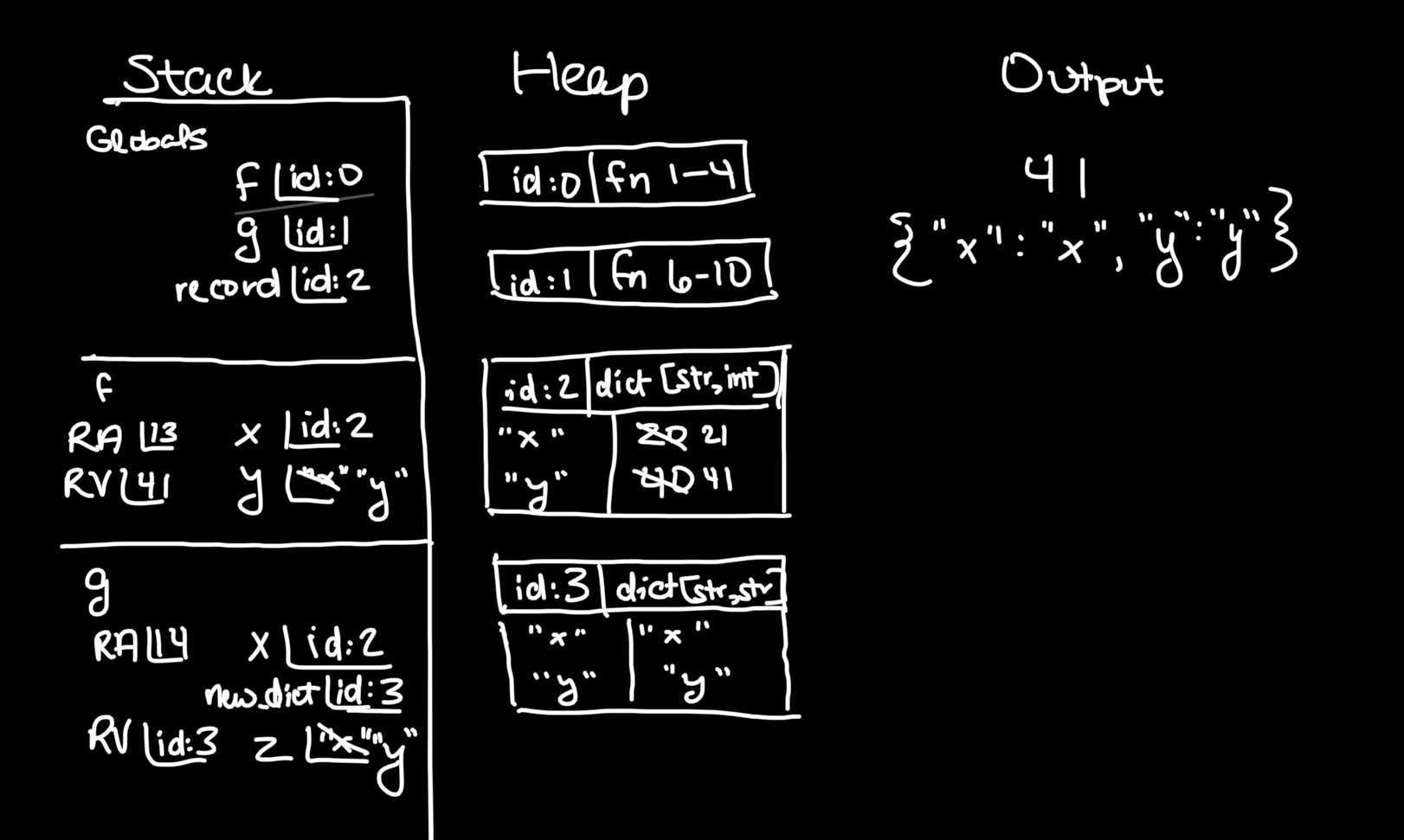Snippet
def f(x: dict[str,int]) -> int:
for y in x:
x[y] += 1
return x[y]
def g(x: dict[str,int]) -> dict[str,str]:
new_dict: dict[str,str] = {}
for z in x:
new_dict[z] = str(z)
return new_dict
record: dict[str, int] = {"x": 20, "y": 40}
print(f(record))
print(g(record))Solution

Image Description: The memory diagram is divided into three segments: Output, Stack, and Heap.
Under the stack, the Globals frame contains references to three objects: * Function f points to a function on the Heap defined from lines 1 to 4. * Function g points to a function on the Heap defined from lines 6 to 10. * The variable record points to a dictionary object on the Heap with string keys and integer values.
The F frame has: * Return Address (RA) at line 13. * Return Value (RV) is the integer 41. * Variable x points to a the same dictionary object on the heap as record. * Variable y with a crossed-out value of “x” and updated to “y”.
The G frame has: * Return Address (RA) at line 14. * Variable x points to the same dictionary object as record. * Variable new_dict to a second dictionary object on the Heap. * Variable z with a crossed-out value of “x” updated to “y”.
The heap has two dictionary objects: * The first dictionary object is associated with the variable record in Globals frame and the variable x in the F and G frames. It contains two string keys, ‘x’ with the integer value 20 crossed out and updated to 21, and ‘y’ with the integer value 40 crossed out and updated to 41. * The second dictionary object is associated with the variable new_dict in the G frame, with string keys ‘x’ and ‘y’ and string values ‘x’ and ‘y’ respectively.
Output: The output displays the integer 41 and a dictionary object with keys ‘x’ and ‘y’, each paired with their respective values ‘x’ and ‘y’ as strings.